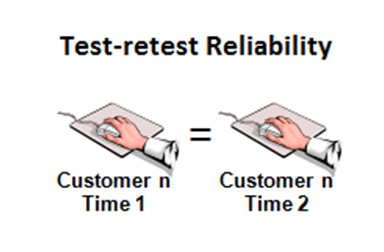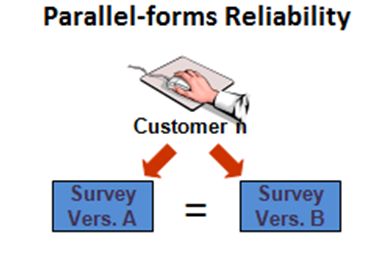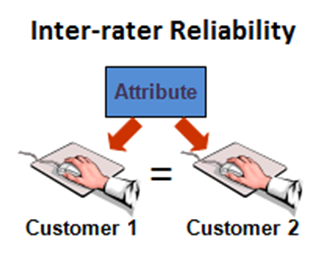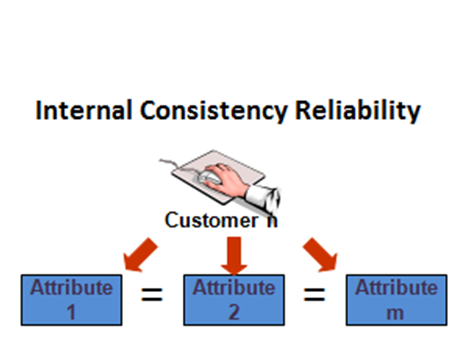Your email should illustrate that you are a qualified and suitable person for the open position in professor lab. It should be short, clear and concise without repeating the whole details of your CV. Always make the first impression good by reading about the professor’s research projects and mentioning them in your email. Throughout your email keep in mind about grammar and punctuation. You can find a sample email template for contacting the professor at the end of this article.
This page provides world class learning resources and high quality information in order to help those who need it.
Tuesday, June 11, 2019
How to Email a Professor for PhD and MS Scholarships?
Email plays an essential role when it comes to approaching a professor for scholarships, funding and research supervision. Content of your email is the first impression which you will give to the professor that will describe you are a serious and well qualified applicant. So, what is the best way to write an email that can increase your chances of selection for the specific position in the professor lab or research group? Here are the guidelines about the structure and content of the email.
Your email should illustrate that you are a qualified and suitable person for the open position in professor lab. It should be short, clear and concise without repeating the whole details of your CV. Always make the first impression good by reading about the professor’s research projects and mentioning them in your email. Throughout your email keep in mind about grammar and punctuation. You can find a sample email template for contacting the professor at the end of this article.
Your email should illustrate that you are a qualified and suitable person for the open position in professor lab. It should be short, clear and concise without repeating the whole details of your CV. Always make the first impression good by reading about the professor’s research projects and mentioning them in your email. Throughout your email keep in mind about grammar and punctuation. You can find a sample email template for contacting the professor at the end of this article.
Wednesday, May 29, 2019
Thesis Writing-Tips and Tricks
Writing a thesis may be one of the difficult tasks you have to face in your academic life. By selecting a suitable subject and ideas, all the way through to form a convincing and thought-provoking conclusion. This short guide will cover a few tips and tricks about the process that may assist you.
1. Write the Conclusion First
The introduction of a thesis comes first, obviously, but it is actually more common to write that last. Start writing your conclusion first instead – you can always go back and revise it later. The conclusion is what leaves a lasting impression on the reader, and it is your final chance to show how important your ideas are and why they matter.
The conclusion is not simply a summary of everything that came before it, although that is part of it. Instead of a simple summary, you should aim to tie up all loose ends and bring together your ideas and references to solidify the original point. It is also a chance for you to elaborate on the ideas presented earlier in the thesis, and a chance for you to prove that people should care.
Consider reading the conclusion to a friend, perhaps someone not as familiar with the subject matter as yourself, and get them to ask questions. You can even prompt them to be extra critical so that they don’t just go along with whatever you’re saying because they’re a friend. If you don’t wish to invite anyone else in to assist. Just ask yourself, after every point made in the conclusion, why should people care about this? What difference could this possibly make in the life of someone reading it?
2. It’s Not a Mystery Novel
The reader should be aware of what your point is, and how you intend to prove it, before they get too far into reading your thesis. It should not be a mystery, in which the murderer and victim only become known toward the end of the piece, for example.
This type of dramatic third act revelation generally does not go over well when it is employed in a thesis. Your readers are expecting an analytical discussion of your chosen subject, in a style that fits in with academic writing.
3. Don’t Rely on Emotion
It is all too common now to see students become overly emotional in their work, and it shows in their writing. Emotional and heartfelt conclusions do little to further the discourse on a subject, as opposed to being more sophisticated in your analytical paper.
Relying on emotions instead of facts throughout your thesis is a bad habit to get in to, and using this style in your conclusion may undermine all of the good work and research that came before it.
4. Hiring Professional Help
Sometimes we all just need a little help. Whether you are overloaded with work and other duties and need a kick start in the form of a thesis proposal, or the entire paper, there are professional teams of writers available 24/7. So, if you are concerned about privacy then consider ordering from the custom thesis helper on Facebook to take this burden off your shoulders, so that you can focus your time on energy on other aspects of your education or personal responsibilities.
Research Topic Selection and Its Steps
It is the ability to develop a good research
topic is an important skill. A tutor may assign you a specific topic, but most
often instructors require you to select your own topic of interest. When
deciding on a topic, there are a few things that you will do it because it is necessary
in topic selection for research.
v Brainstorm for Ideas.
v Select a topic that will enable you to read
and understand the literature.
v Ensure that the topic is manageable and that metrical
is available i.e. data and literature.
v Make a list of keywords.
v Be flexible.
v Define your topic as a focused research
question.
v Research and read more about your topic.
v Formulate a thesis statement / Problem
Statement
Be
aware that selecting a good topic may not be easy. It must be narrow and
focused enough to be interesting, yet broad enough to find adequate information.
Before selecting your topic, make sure you know what your final project should
look like. Each class or instructor will likely require a different format or
style of the research project. Use the steps below to guide you through the process
of selecting a research topic.
Step-1: Brainstorm for Ideas
Choose a topic that interests you. Use the
following questions to help generate topic ideas.
v Do you have a strong opinion on a current
social or political controversy?
v Did you read or see a news story recently
that has piqued your interest or made you angry or anxious?
v Do you have a personal issue, problem or
interest that you would like to know more about?
v Do you have a research paper due for a class
this semester?
v Is there an aspect of a class that you are
interested in learning more about?
Look at some of the following topically
oriented Web sites and research sites for ideas.
Are you interested in current events,
government, politics or the social sciences?
v Try Washington file
Are you interested in health or medicine?
Look in Healthfinder.gov, Health
& Wellness Resource Center or the National Library of Medicine.
Are you interested in health or medicine?
v Look in Healthfinder.gov, Health
& Wellness Resource Center or the National Library of medicine?
Are you interested in the Humanities; art,
literature…etc.?
v Browse links from the National Endowment
for the Humanities.
For other subject areas try:
v the Scout Report or the New
York Times/ College Weblink
Write
down any key words or concepts that may be of interest to you. Could these
terms help be used to form a more focused research topic? Be aware of overused
ideas when deciding a topic. You may wish to avoid topics such as, abortion,
gun control, teen pregnancy, or suicide unless you feel you have a unique
approach to the topic. Ask the instructor for ideas if you feel you are stuck
or need additional guidance.
Step-2: Read General Background Information
Read a general encyclopedia article on the
top two or three topics you are considering. Reading a broad summary enables
you to get an overview of the topic and see how your idea relates to broader,
narrower, and related issues. It also provides a great source for finding words
commonly used to describe the topic. These keywords may be very useful to your
later research. If you can’t find an article on your topic, try using broader
terms and ask for help from a librarian.
For example, the Encyclopedia Britannica
Online /the printed version of this encyclopedia, in Thompson Library's
Reference Collection on Reference Table 1) may not have an article on Social
and Political Implications of Jackie Robinsons Breaking of the Color Barrier in
Major League Baseball but there will be articles on baseball history and on
Jackie Robinson.
Browse the Encyclopedia
Americana for information on your topic ideas. Notice that both online
encyclopedias provide links to magazine articles and Web sites. These are
listed in the left or the right margins.
v Use periodical indexes to scan
current magazine, journal or newspaper articles on your topic. Ask a librarian
if they can help you to browse articles on your topics of interest.
v Use Web search engines. Google and Bing are currently considered
to be two of the best search engines to find web sites on the topic
Step-3: Focus on Your Topic
Keep
it manageable
A topic will be very difficult to research if
it is too broad or narrow. One way to narrow a broad topic such as "the
environment" is to limit your topic. Some common ways to limit a topic are:
v by geographical area
Example:
What environmental issues are most important in the Southwestern US
v by culture
Example:
How does the environment fit into the Navajo world view
v by time frame:
Example:
What are the most prominent environmental issues of the last 10 years
v by discipline
Example:
How does environmental awareness effect business practices today?
v by population group
Example:
What are the effects of air pollution on senior citizens?
Remember
that a topic may be too difficult to research if it is too:
Locally
confined - Topics this specific may only be covered in these (local)
newspapers, if at all.
Example: What sources of pollution affect the
Genesee County water supply?
v recent - If a topic is quite recent,
books or journal articles may not be available, but newspaper or magazine
articles may. Also, Web sites related to the topic may or may not be available.
v broadly interdisciplinary - You could be
overwhelmed with superficial information.
Example:
How can the environment contribute to the culture, politics and society of the
Western states.
v popular - You will only find very
popular articles about some topics such as sports figures and high-profile
celebrities and performers.
If you
have any difficulties or questions with focusing your topic, discuss the topic
with your tutor/librarian.
Step-4: Make a List of Useful Keywords
Keep
track of the words that are used to describe your topic.
v
Look for words that best describe your topic.
v
Look for them in when reading encyclopedia articles and
background and general information.
v
Find broader and narrower terms, synonyms, key concepts
for key words to widen your search capabilities.
v
Make note of these words and use them later when
searching databases and catalogs.
Step-5: Be Flexible
It is common to modify your topic during the
research process. You can never be sure of what you may find. You may find
too much and need to narrow your focus, or too little and need to broaden your
focus. This is a normal part of the research process. When researching, you may
not wish to change your topic, but you may decide that some other aspect of the
topic is more interesting or manageable.
Keep in mind the assigned length of the
research paper, project, bibliography or another research assignment. Be
aware of the depth of coverage needed and the due date. These important factors
may help you decide how much and when you will modify your topic. Your tutor will probably provide specific requirements, if not then the following
table can provide a rough guide.
Assigned Length of Research Paper or Project
|
Suggested guidelines for approximate number and types of sources
needed
|
1-2 page paper
|
2-3 magazine articles or Web sites
|
3-5 page paper
|
4-8 items, including book, articles (scholarly and/or popular) and Web
sites
|
Annotated Bibliography
|
6-15 items including books, scholarly articles, Web sites and other
items
|
10-15 page research paper
|
12-20 items, including books, scholarly articles, web sites and other
items
|
Step
6: Define Your Topic as a Focused Research Question
You will often begin with a word, develop a
more focused interest in an aspect of something relating to that word, then
begin to have questions about the topic.
For example
§
Ideas = Frank Lloyd Wright or modern architecture
§
Research Question = How has Frank Lloyd Wright
influenced modern architecture?
§
Focused Research Question = What design principles
used by Frank Lloyd
Wright are common in contemporary
homes
Step
7: Research and Read More About Your Topic
Use
the key words you have gathered to research in the catalog, article
databases, and Internet search engines. Find more information to help you
answer your research question.
You
will need to do some research and reading before you select your final topic.
Can you find enough information to answer your research question? Remember,
selecting a topic is an important and complex part of the research process.
Step
8: Formulate a Thesis Statement
Write your topic as a thesis
statement. This may be the answer to your research question and/or a way
to clearly state the purpose of your research. Your thesis statement will
usually be one or two sentences that states precisely what is to be answered,
proven, or what you will inform your audience about your topic.
The development of a thesis assumes there is sufficient evidence to support the thesis statement.
The development of a thesis assumes there is sufficient evidence to support the thesis statement.
For example, a thesis statement could
be: Frank Lloyd Wright's design principles,
including his use of
ornamental detail and his sense of space and texture, opened a new era of
American architecture. His work has influenced contemporary residential design.
The title of your paper may not be exactly
the same as your research question or your thesis statement, but the title
should clearly convey the focus, purpose, and meaning of your research.
For example, a title could be: Frank
Lloyd Wright: Key Principles of Design for the Modern Home.
Remember to follow any specific instructions
from your tutor.
Practical
Exercises to Extend Your Learning
Identify
three narrower aspects of the following broad topics. In other words, what are
three areas you could investigate that fit into these very broad topics?
v
Pollution
v
Sports
v
Politics
Identify
a broader topic that would cover the following narrow topics. In other words,
how could you expand these topics to find more information?
Menus
in Michigan prisons
Urban planning in Flint
Urban planning in Flint
Imagine
that you have been assigned the following topics. Think of 5 keywords you might
use to look for information on each.
How
does air quality affect our health?
What are the barriers to peace in the Middle East?
Should snowmobiling be allowed in wilderness areas?
How can welfare reform help poor children
What are the barriers to peace in the Middle East?
Should snowmobiling be allowed in wilderness areas?
How can welfare reform help poor children
Tuesday, May 28, 2019
Short Cuts of MS-Office
Save Your time with Short Cut 
Ctrl + A - Select All
Ctrl + B - Bold
Ctrl + C - Copy
Ctrl + D - Fill
Ctrl + F - Find
Ctrl + G - Find next instance of text
Ctrl + H - Replace
Ctrl + I - Italic
Ctrl + K - Insert a hyperlink
Ctrl + N - New workbook
Ctrl + O - Open
Ctrl + P - Print
Ctrl + R - Nothing right
Ctrl + S - Save
Ctrl + U - Underlined
Ctrl + V - Paste
Ctrl W - Close
Ctrl + X - Cut
Ctrl + Y - Repeat
Ctrl + Z - Cancel
F1 - Help
F2 - Edition
F3 - Paste the name
F4 - Repeat the last action
F4 - When entering a formula, switch between absolute / relative references
F5 - Goto
F6 - Next Pane
F7 - Spell Check
F8 - Extension of the mode
F9 - Recalculate all workbooks
F10 - Activate Menubar
F11 - New graph
F12 - Save As
Ctrl +: - Insert the current time
Ctrl +; - Insert the current date
Ctrl + "- Copy the value of the cell above
Ctrl + '- Copy the formula from the cell above
Shift - Offset Adjustment for Additional Functions in the Excel Menu
Shift + F1 - What is it?
Shift + F2 - Edit cell comment
Shift + F3 - Paste the function into the formula
Shift + F4 - Search Next
Shift + F5 - Find
Shift + F6 - Previous Panel
Shift + F8 - Add to the selection
Shift + F9 - Calculate the active worksheet
Shift + F10 - Popup menu display
Shift + F11 - New spreadsheet
Shift + F12 - Save
Ctrl + F3 - Set name
Ctrl + F4 - Close
Ctrl + F5 - XL, size of the restore window
Ctrl + F6 - Next Workbook Window
Shift + Ctrl + F6 - Previous Workbook Window
Ctrl + F7 - Move window
Ctrl + F8 - Resize Window
Ctrl + F9 - Minimize the workbook
Ctrl + F10 - Maximize or Restore Window
Ctrl + F11 - Inset 4.0 Macro sheet
Ctrl + F1 - Open File
Alt + F1 - Insert a graph
Alt + F2 - Save As
Alt + F4 - Output
Alt + F8 - Macro dialog
Alt + F11 - Visual Basic Editor
Ctrl + Shift + F3 - Create a name using the names of row and column labels
Ctrl + Shift + F6 - Previous Window
Ctrl + Shift + F12 - Printing
Alt + Shift + F1 - New spreadsheet
Alt + Shift + F2 - Save
Alt + = - AutoSum
Ctrl + `- Toggle value / display of the formula
Ctrl + Shift + A - Insert the argument names in the formula
Alt + down arrow - automatic view list
Alt + '- Format Style Dialog
Ctrl + Shift + ~ - General Format
Useful Links for Free Online Education, Career, Reviewing Resume, Learn Excel and Interview Preparation
Top 10 Sites for Free Online Education
1. Coursera
2. edX
3. Stanford Online
4. Udemy
5. iTunesU Free Courses
6. MIT OpenCourseWare
7. Khan Academy
8. Codecademy
9. Open Culture Online Courses
10. MOOC
Top 10 Sites for your career
1. LinkedIN
2. Indeed
3. Careerealism
4. Job-Hunt
5. JobBait
6. Careercloud
7. GM4JH
8. Personalbrandingblog
9. Jibberjobber
10. Neighbors-helping-neighbors
Top 10 Sites to review your resume for free
1. Zety Resume Builder
2. Resumonk
3. Resume dot com
4. VisualCV
5. Cvmaker
6. ResumUP
7. Resume Genius
8. Resumebuilder
9. Resume Baking
10. Enhancv
Top 10 Sites to learn Excel for free
1. Microsoft Excel Help Center
2. Excel Exposure
3. Chandoo
4. Excel Central
5. Contextures
6. Excel Hero
7. Mr. Excel
8. Improve Your Excel
9. Excel Easy
10. Excel Jet
Top 10 Sites for Interview Preparation
1. Ambitionbox
2. AceTheInterview
3. Geeksforgeeks
4. Leetcode
5. Gainlo
6. Careercup
7. Codercareer
8. InterviewUp
9. InterviewBest
10. Indiabix
Research Reliability and Its Types
Research Reliability
Reliability refers to whether or not you get the same answer by using an instrument to measure something more than once. In simple terms, research reliability is the degree to which research technique produces consistent and stable outcomes.
A specific measure is considered to be reliable if its application on the same object of measurement number of times produces the same outcomes. Research reliability can be divided into three categories:
1. Test-retest reliability relates to the measure of reliability that has been obtained by conducting the same test more than one time during the period of time with the participation of the same sample group.
Example: Wokers of ABC Company may be asked to complete the same questionnaire about workers job satisfaction two times with an interval of one week so that test outcomes can be compared to assess the stability of scores.
2. Parallel forms reliability relates to a measure that is obtained by conducting assessment of the same phenomena with the participation of the same sample group via more than one assessment method.
Example: The levels of employee satisfaction of ABC Company may be assessed with questionnaires, in-depth interviews and focus groups and results can be compared.
3. Inter-rater reliability as the name indicates relates to the measure of sets of results obtained by different assessors using the same methods. Benefits and importance of assessing inter-rater reliability can be explained by referring to the subjectivity of assessments.
Example: Levels of employee motivation at ABC Company can be assessed using the observation method by two different assessors, and inter-rater reliability relates to the extent of difference between the two assessments.
4. Internal consistency reliability is applied to assess the extent of differences within the test items that explore the same construct produce similar results. It can be represented in two main formats.
a) average inter-item correlation is a specific form of internal consistency that is obtained by applying the same construct on each item of test.
b) split-half reliability as another type of internal consistency reliability involves all items of a test to be ‘spitted in half’.
Subscribe to:
Posts (Atom)



